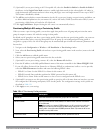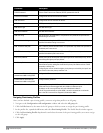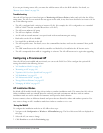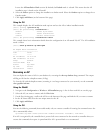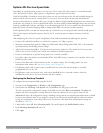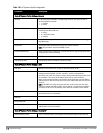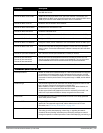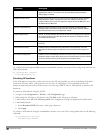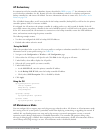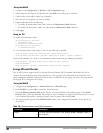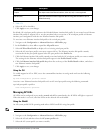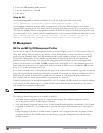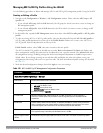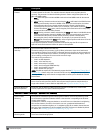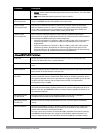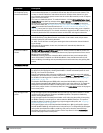
AP Redundancy
In conjunction with the controller redundancy features described in VRRP on page 477 the information in this
section describes redundancy for APs. Remote APs also offer redundancy solutions via a backup configuration,
backup controller list, and remote AP failback. For more information relevant to remote APs, see Remote Access
Points on page 510.
The AP failback feature allows an AP associated with the backup controller (backup LMS) to fail back to the primary
controller (primary LMS) if it becomes available.
If configured, the AP monitors the primary controller by sending probes every 600 seconds by default. If the AP
successfully contacts the primary controller for the entire hold-down period, it will fail back to the primary controller.
If the AP is unsuccessful, the AP maintains its connection to the backup controller, restarts the LMS hold-down
timer, and continues monitoring the primary controller.
The following example assumes:
l You have not configured the LMS or backup LMS IP addresses
l Default values unless otherwise noted.
Using the WebUI
Follow the procedure below to use the AP system profile to configure a redundant controller. For additional
information on AP system profile settings, see Table 120.
1. Navigate to the Configuration > Wireless > AP Configuration page.
2. Select either the AP Group or AP Specific tab. Click Edit for the AP group or AP name.
3. Under Profiles, select AP to display the AP profiles.
4. Select the AP system profile you want to modify.
5. Under Profile Details:
a. At the LMS IP field, enter the primary controller IP address.
b. At the Backup LMS IP field, enter the backup controller IP address.
c. Click (select) LMS Preemption. This is disabled by default.
6. Click Apply.
Using the CLI
ap system-profile <profile>
lms-ip <ipaddr>
bkup-lms-ip <ipaddr>
lms-preemption
ap-group <group>
ap-system-profile <profile>
ap-name <name>
ap-system-profile <profile>
AP Maintenance Mode
You can configure APs to suppress traps and syslog messages related to those APs. Known as AP maintenance mode,
this setting in the AP system profile is particularly useful when deploying, maintaining, or upgrading the network. If
enabled, APs stop flooding unnecessary traps and syslog messages to network management systems or network
operations centers during a deployment or scheduled maintenance. The controller still generates debug syslog
messages if debug logging is enabled. After completing the network maintenance, disable AP maintenance mode to
ensure all traps and syslog messages are sent. AP maintenance mode is disabled by default.
DellPowerConnectW-SeriesArubaOS6.2 | User Guide AccessPoints(APs) | 421



